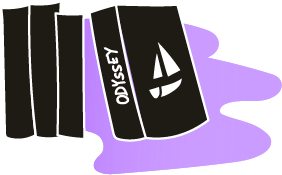Title of the resource
Title of the resource in english
Publisher
CET
Original language
Target and Age Group
6th grade, 11-12 year olds
Link to resource
Author of the Entry:
Ayelet Peer, Bar- Ilan University, ayelet.peer@biu.ac.il
Peer-reviewer of the Entry:
Lisa Maurice, Bar-Ilan University, lisa.maurice@biu.ac.il
Second Peer-reviewer of the Entry:
Susan Deacy, University of Roehampton, s.deacy@roehampton.ac.uk
CET Team
Contents & Purpose
This is a textbook for the study of History in 6th grade. The main theme is Judea and its relationship with the Greek, Hellenistic and Roman societies until the outbreak of the great rebellions against the Romans: the first great rebellion (66-73 C.E.) and the destruction of the second temple in 70 C.E. The second is the Bar Kokhba revolt 132-135 C.E.
The book also includes background on the rise of Christianity and the emergence of the center of Jewish culture in Babylon. The book follows the official governmental curriculum and contains the following subjects:
Unit 1: Greeks and Hellenists (classical and Hellenistic Greece)
Unit 2: Judea and the Hellenistic World
Unit 3: The Roman Empire and Judea
Unit 4: Society and Religion in Judea
Unit 5; The Great Revolt of the Jews against the Romans
Unit 6: The End of an Era
Further comments
The book is comprised of texts, pictures, photos and illustrations. The aim is to teach the children the timeline of the period and the historical progress of events. It also introduces them to map reading. The book explains the resources used by historians, such as first and secondary resources (ancient texts) and the difference between written evidence and archaeological findings. It provides a glimpse of the ancient societies and cultures of the ancient Mediterranean and especially their effect on Judea.
In Unit 1, there is an introduction to ancient Greece, explaining the political structure of the polis, comparing Athens and Sparta, and outlining the Greek polytheistic religion, sport, art and philosophy. Then Alexander’s exploits are introduced, along with the features of Hellenistic society. The Hellenistic kingdoms are also briefly examined.
The Greek religion is a central focus of the book’s discussion of Greek society and culture as well as the development of philosophy and theatre. There is further discussion of Greek religion and mythology in a specific section titled “the historian workshop”. In this section, segments from the Iliad and Odyssey are presented, such as the causes for the Trojan War, the wooden horse and Odysseus’ journey
Unit 2 narrates the relation between the kingdom of Judea and the Hellenistic rulers and the development of the Hasmonean dynasty.
Unit 3 describes the Roman Republic and Empire and institutions, from its foundation, and focuses on the relations between Rome and Judea.


